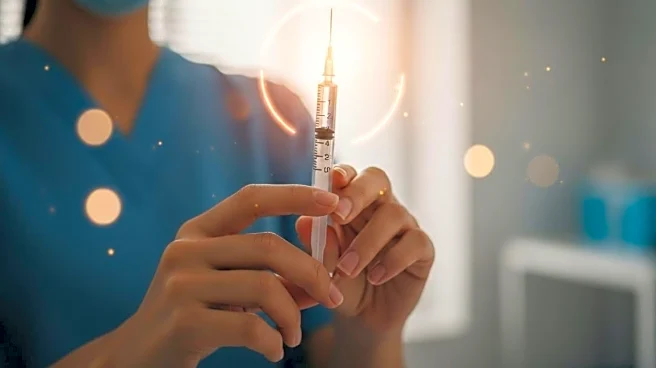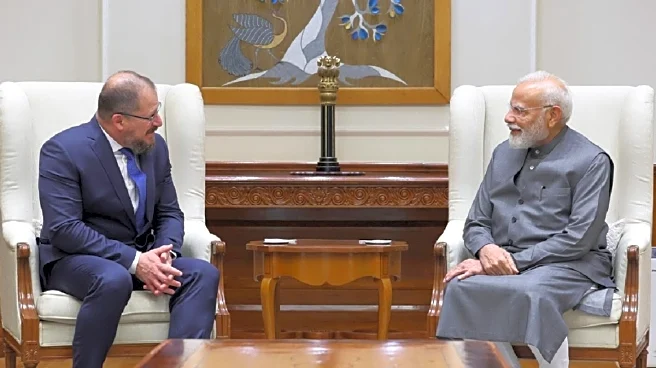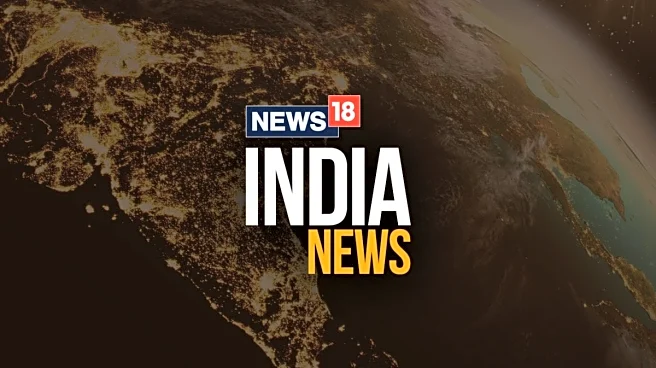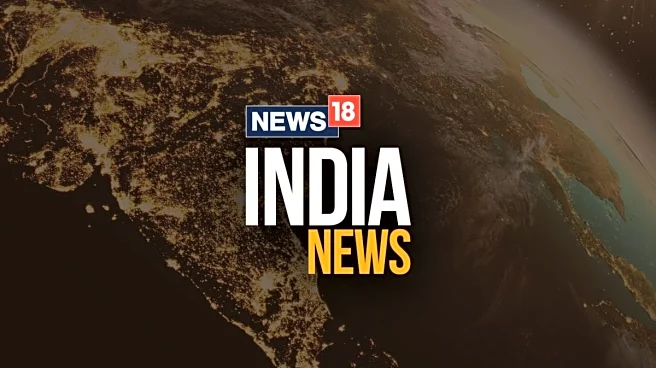The Centres for Disease Control and Prevention (CDC) has stirred global debate yet again by officially removing its universal recommendation for COVID-19 booster shots, leaving the decision to individual Americans. The move marks a major shift from previous US health policy, which advised annual boosters for everyone aged six months and older.
The decision follows months of controversy surrounding the CDC’s leadership and advisory structure. US Health Secretary Robert F. Kennedy Jr. replaced the CDC’s Advisory Committee on Immunisation Practices (ACIP) with a new panel that includes some members known for questioning vaccine safety. Acting on their advice, the CDC now recommends “shared clinical decision-making”, urging individuals, especially
older adults and those with existing conditions, to consult healthcare professionals before opting for another booster.
While Americans navigate this new phase of vaccine choice, India has quietly moved past the peak of its COVID-19 vaccination campaign. With weekly booster doses now in the single or double digits, India’s vaccination drive has largely transitioned from mass immunisation to a voluntary, near-symbolic effort. The contrast between the US’s policy upheaval and India’s steady de-escalation highlights how, five years after the pandemic’s peak, global strategies are taking sharply different paths.
CDC Makes COVID-19 Boosters Optional: What Happened?
Earlier this year, the CDC underwent a turbulent leadership period. Susan Monarez briefly served as Acting Director before being officially confirmed in July and then abruptly dismissed in August, reportedly due to disagreements with the new ACIP panel. Jim O’Neill, now Acting CDC Director and Deputy Secretary of Health and Human Services, formalised the decision to make COVID-19 boosters optional for healthy adults, children, and pregnant women.
The updated guidelines promote informed consent and individual risk assessment. While roughly 85% of US adults completed the initial vaccination series, only around 23% received the most recent booster. The policy change reflects waning demand, evolving epidemiology, and political pressure reshaping public health policy in America.
Timeline: CDC COVID-19 Policy in 2025
| Date | Event |
| January | Susan Monarez appointed Acting CDC Director |
| 27 May | HHS Secretary Robert F. Kennedy Jr. removes COVID-19 vaccines from routine schedule for healthy children and pregnant women |
| 30 May | CDC updates guidance to “shared clinical decision-making” for healthy children and pregnant women |
| June | HHS dismisses all ACIP members, appoints new 12-member panel including vaccine critics |
| 31 July | Susan Monarez confirmed as official CDC Director |
| 27 August | Monarez dismissed after refusing to pre-approve ACIP recommendations |
| 28 August | Jim O’Neill appointed Acting CDC Director; several top officials resign |
| 19 September | New ACIP panel recommends individualised COVID-19 vaccination for everyone aged six months and above |
| 6 October | CDC formalises “individual decision-making” approach for COVID-19 vaccines |
India’s COVID-19 Vaccination Landscape
While US policy is facing turbulence, India’s COVID-19 booster programme has quietly wound down. Data from the CoWIN portal, analysed by the Ministry of Health and Family Welfare, shows that fewer than 20 doses per week are being administered in 2025, a dramatic decline from 1.7 million weekly doses at the start of 2023.
The so-called “precaution doses” that once made up nearly 90% of vaccinations have almost disappeared. This decline reflects high population immunity, low disease severity, and public fatigue with repeated vaccination campaigns. Unlike the US, India’s transition has been gradual, guided by epidemiological data rather than abrupt policy changes.
India’s COVID-19 Vaccination Timeline (2023–2025)
| Period | Approx. Weekly Average Doses | Trend |
| Q1 2023 | 500,000 – 1.7 million | Active booster campaigns |
| Q2 2023 | <50,000 | Sharp decline begins |
| Q4 2023 | <1,000 | Vaccination nearly halted |
| Q2 2024 | <100 | Minimal residual doses |
| 2025 (till October) | <20 | Symbolic or isolated vaccinations |
The last notable surge in boosters occurred in March 2024, with around 42,689 doses administered, 89% of which were precautionary. Since mid-2024, weekly numbers have dropped to single digits, signalling that India’s vaccination drive has entered a maintenance phase, catering primarily to late registrations, immunocompromised individuals, and travellers requiring proof of vaccination.
Why the Two Approaches Differ?
The stark difference between the US and India stems from a mix of public health philosophy, immunity profiles, and political context.
- Population Immunity: India’s multiple waves of infection have resulted in strong hybrid immunity (vaccination plus natural infection), reducing the urgency for continued boosters.
- Public Fatigue: Booster fatigue set in early, with limited enthusiasm for repeated shots once cases declined.
- Policy Design: India’s strategy has always favoured a voluntary, time-bound approach instead of indefinite recommendations.
- Infrastructure Realities: Logistical constraints also encouraged a more data-driven, targeted vaccination effort, focusing on areas of need.
Meanwhile, the US’s policy shift reflects a balancing act between scientific updates, public sentiment, and political oversight. The CDC’s optional approach places greater emphasis on personal responsibility, particularly for seniors and people with chronic illnesses.
The US’s decision to drop universal booster recommendations may reshape pharmaceutical demand, public health messaging, and even travel health protocols worldwide. For India, the phase-out of booster campaigns marks a pragmatic close to a massive public health operation one that managed to achieve population-level immunity without resorting to mandates.
Other countries can draw distinct lessons from both experiences:
- The US model underscores the importance and difficulty of maintaining public trust in an era of polarised science and politics.
- The Indian model demonstrates how a gradual, data-led withdrawal can balance public health goals with limited resources and pandemic fatigue.
United States vs India: COVID-19 Vaccination Status
| Aspect | United States | India |
| Current Recommendation | Optional, individual decision-making | Voluntary, minimal doses |
| Weekly Doses (2025) | Variable; not universally tracked | <20 nationwide |
| Target Population | Seniors, high-risk individuals | Special cases, immunocompromised, late registrations |
| Vaccination History | 85% primary series; 23% latest booster | Peak (2023): 1.7M/week; 2025: negligible |
| Policy Approach | Sudden shift amid leadership changes | Gradual, data-driven de-escalation |
| Public Engagement | Mixed; politically charged | Low demand, high acceptance of natural immunity |
As the CDC embraces a personal choice model for COVID-19 boosters, India’s quiet exit from its vaccination campaign offers an alternative case study in pandemic management. While the US navigates questions of autonomy and trust, India’s measured strategy shows that immunity, once established, can sustain itself without continued policy pressure.
Five years since the pandemic’s peak, these two democracies are rewriting the rulebook on public health one through political reform, the other through epidemiological calm.


/images/ppid_59c68470-image-176008755516212105.webp)
/images/ppid_59c68470-image-176007755263015842.webp)
/images/ppid_59c68470-image-176007004514412776.webp)



/images/ppid_a911dc6a-image-176017403318726522.webp)

/images/ppid_a911dc6a-image-176016122674368059.webp)


/images/ppid_59c68470-image-176012003186091123.webp)

/images/ppid_a911dc6a-image-176003243109455977.webp)
/images/ppid_59c68470-image-176008013131530650.webp)